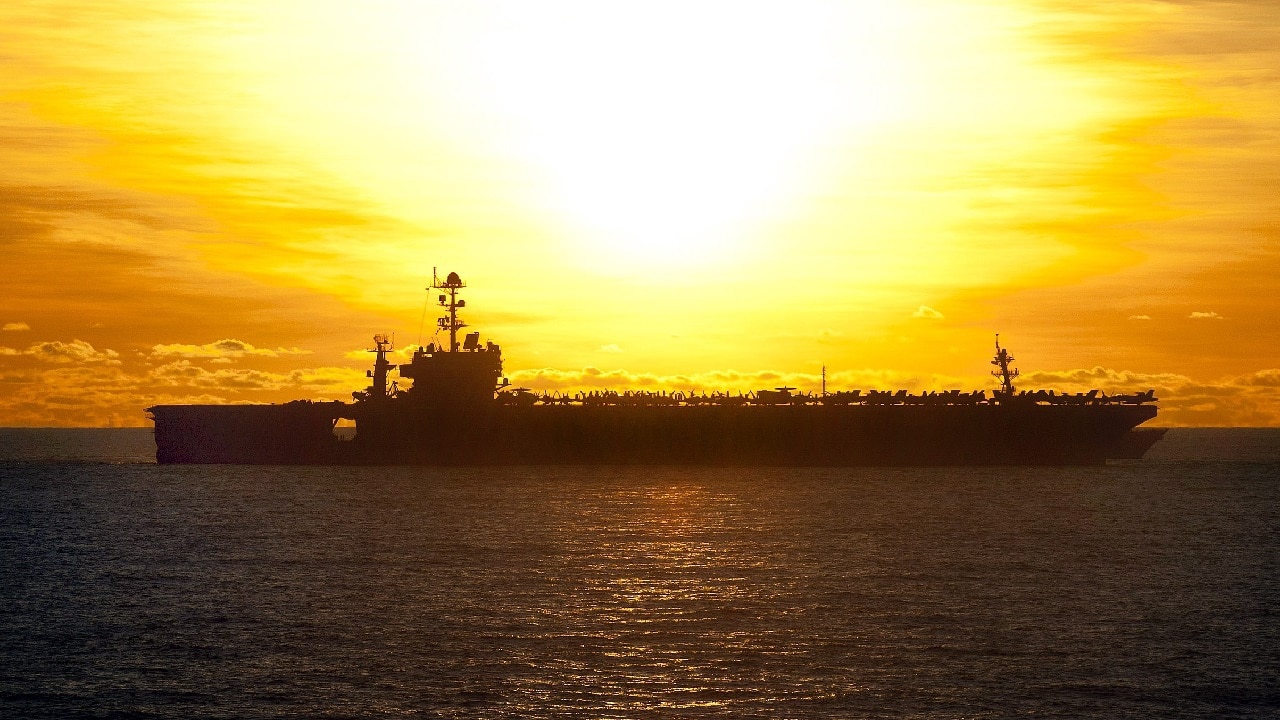The U.S. Navy will soon play some musical chairs of the nuclear-powered supercarrier variety.
The USS George Washington (CVN-73) will return to Japan by 2025, replacing the USS Ronald Reagan (CVN-76) as the service’s only forward-deployed aircraft carrier.
Both are Nimitz-class carriers. CVN-73 has been in service since 1992 and is now completing her four-year Refueling and Complex Overhaul, while CVN-76 entered service in July 2003.
The USS George Washington became the first forward-deployed nuclear-powered aircraft carrier stationed at Yokosuka Naval Base, Japan, in 2008.
Seven years later, in 2015, the USS Ronald Reagan replaced her sister carrier. As part of a federal law enacted in 2019, the forward deployment of a naval vessel is limited to 10 years.
That is why within two years, CVN-73 will be back in Japan.
The refit of the USS George Washington is actually running behind schedule, and her return to Japan could come down to the wire.
Though the process was originally expected to last four years, there were significant delays due to the Covid-19 pandemic, along with other setbacks.
The UUS George Washington: New and Improved
When CVN-73 returns to service next year, she will be able to embark with the MQ-25A Stingray, a 50-foot drone that can refuel other aircraft in flight and extend the range of the carrier’s air wing.
The Stingray has a range of 500 nautical miles and can deliver up to 16,000 pounds of fuel mid-air to the carrier’s F/A-18 Super Hornets, EA-18G Growlers, and F-35C Lightning IIs.
The MQ-25 was developed as part of the Carrier-Based Aerial Refueling System program, which grew out of the previous Unmanned Carrier-Launched Airborne Surveillance and Strike program.
The Stingray comprises two major segments — the MQ-25 Air System, which is the air vehicle, and the Unmanned Carrier Aviation Mission Control System, which is the platform required for carrier integration and for command and control of the air vehicle and its payload.
The U.S. Navy plans for all Nimitz-class and Gerald R. Ford-class carriers to eventually be MQ-25 capable.
Japan-Bound?
The two ships will swap roles, and in the process they might also swap a number of sailors. The USS George Washington’s 2008 arrival in Yokosuka was preceded by several months by more than 240 U.S. Navy families — and when the USS Ronald Reagan arrived to replace her sister carrier in 2015, approximately two-thirds of the ships’ crews transferred between them, Stars and Stripes reported.
Since taking on the role of the Navy’s only forward-deployed carrier, the USS Ronald Reagan had conducted operations throughout the Indo-Pacific region, including a deployment to the Middle East in June 2021 to help with the withdrawal of U.S. forces from Afghanistan. After a seven-month strike group deployment across the 7th Fleet last year, CVN-76 returned to Yokosuka on Dec. 16.
Author Experience and Expertise:
A Senior Editor for 19FortyFive, Peter Suciu is a Michigan-based writer. He has contributed to more than four dozen magazines, newspapers, and websites with over 3,200 published pieces over a twenty-year career in journalism. He regularly writes about military hardware, firearms history, cybersecurity, politics, and international affairs. Peter is also a Contributing Writer for Forbes and Clearance Jobs. You can follow him on Twitter: @PeterSuciu.

